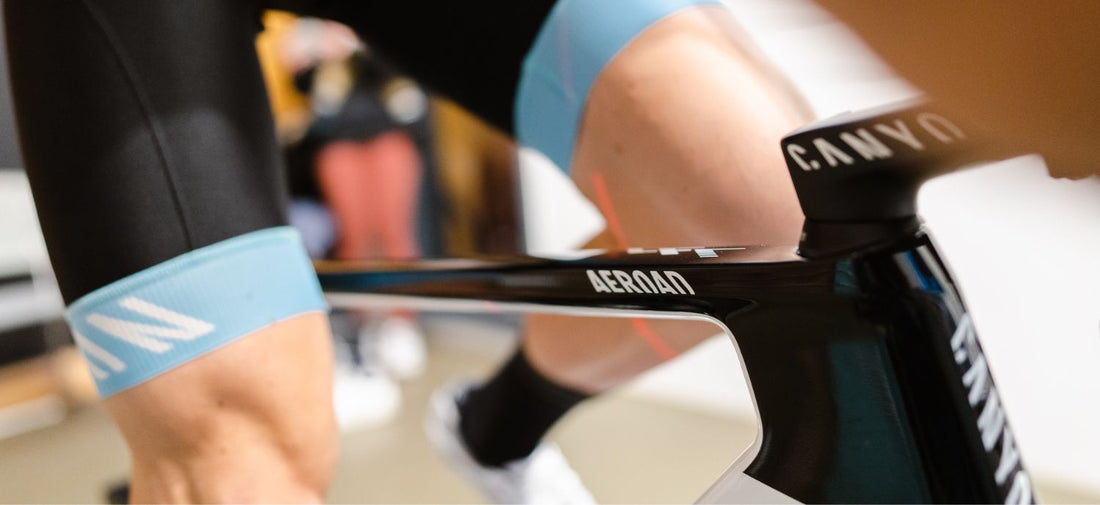
Medial Collateral Ligament (MCL) pain in cycling: causes and solutions
Cycling is a fantastic way to stay fit, but knee pain, especially around the medial collateral ligament (MCL), can sideline even the most dedicated riders. The MCL, a band of tissue on the inner side of the knee, stabilizes the joint, and stress on it can lead to discomfort or injury. Understanding why MCL pain occurs and how to address it can keep you pedaling smoothly.
Why cyclists experience MCL pain in the knee
MCL pain often stems from improper mechanics or overexertion. Here are the main culprits:
Improper saddle height or fore-aft position altering knee tracking
A saddle that’s too high or too far forward/backward changes how your knee moves during the pedal stroke. This misalignment can strain the MCL as it compensates for unnatural tracking, leading to irritation over time.
Inward knee collapse during pedaling due to weak hip stabilizers
Weak hip muscles, like the glutes or abductors, can cause your knees to collapse inward while pedaling. This places extra stress on the MCL, which struggles to maintain knee stability under repetitive motion.
Overuse or excessive mileage without proper recovery
Pushing too hard or ramping up mileage too quickly without adequate rest can inflame the MCL. The repetitive nature of cycling amplifies this strain, especially if recovery isn’t prioritized.

Biomechanical and equipment factors behind MCL strain
Your bike setup and body mechanics play a big role in MCL health. Missteps here can quietly contribute to pain.
Cleat position forcing internal knee rotation
Improperly aligned cleats can force your knees into unnatural rotation, stressing the MCL. For example, cleats angled too far inward can overstretch the ligament with each pedal stroke.

Crank length or Q-factor not suited to your body geometry
Crank arms that are too long or a Q-factor (the distance between pedals) that doesn’t match your hip width can throw off knee alignment. This mismatch increases MCL strain as your legs work against the bike’s geometry.
Muscle imbalances between quads, hamstrings, and hips
If your quads overpower your hamstrings or your hips lack strength, your knees bear the brunt of the imbalance. This uneven pull can tug on the MCL, causing discomfort during rides.
Use carbon cycling insoles
Cycling-specific insoles, such as those from Solestar, support proper alignment of your feet, knees, and hips. This promotes balanced glute engagement, reduces unnecessary movement and boosts pedaling efficiency

How to relieve MCL discomfort during a ride
If MCL pain flares up mid-ride, quick adjustments can help you finish without worsening the issue.
Lower saddle slightly to reduce medial knee stress
Dropping your saddle a few millimeters can ease the angle of knee flexion, reducing MCL strain. Be cautious not to lower it too much, as this can cause other issues.
Adjust cleats to allow more natural knee tracking
If possible, tweak your cleat position to allow slight foot rotation (float). This reduces forced internal rotation and lets your knees track more naturally.
Reduce intensity and shift to easier gears temporarily
Ease off the power and spin in a lighter gear to minimize stress on the MCL. This lowers the force your knee absorbs while maintaining cadence.

Preventing MCL Pain from Cycling in the Long Run
To keep MCL pain at bay, focus on long-term strategies that address both your body and bike setup.
Work on hip and glute strength to support knee stability
Strengthening your glutes and hip abductors with exercises like clamshells or side-lying leg raises helps stabilize your knees. Strong hips prevent inward knee collapse, protecting the MCL.
Include stretching and mobility work in your training routine
Tight hamstrings, quads, or hip flexors can pull on the knee joint, straining the MCL. Regular stretching, foam rolling, and mobility exercises like lunges or hip circles keep these muscles balanced and your knees happy.
By addressing these factors, you can minimize MCL pain and enjoy cycling without discomfort. Listen to your body, make gradual changes, and consult a professional if pain persists.

